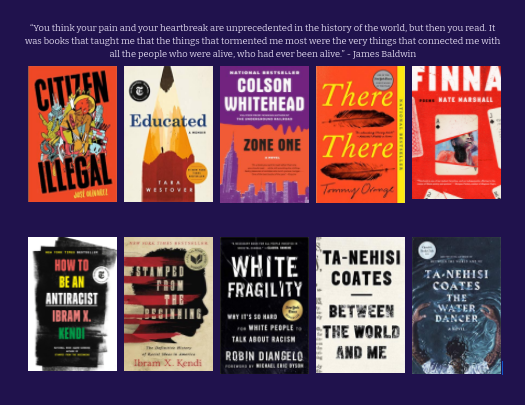Changes to English Curriculum to Share Racially Represented Stories

Photo provided by Jason Verdin
Several novels from authors of color are being read and considered for new choices in the English curriculum.
December 8, 2020
Last summer, The English Department decided to change the curriculum of the books that have to be taught. Neuqua English Department Chair Karen Lawson, emphasizes that “reading makes us more human and grows to understand of people’s stories that are not our own,” so the department has decided to release a selection of books that start a discussion with racial issues.
The themes of the books overall share the same themes of identity, culture, gender, race, dreams, our life journeys, etc. Lawson explains that they are trying to “expose students to a wider range of contemporary, living writers who bring stories with different perspectives regarding gender, culture, identity, race, and voice.” She wants students grades 9-12 to be exposed to “more than dead white male writers” as well as represent the population of District 204 as a whole.
The non-fiction text The Other Wes Moore written by the black author Wes Moore and The Marrow Thieves by a fiction writer Cherie Dimaline, who writes about the indigenous experience, were given to the freshmen. Additionally, teachers in all three high schools are piloting choice books and getting feedback from students on if these titles should become anchor texts. Next summer Mike Purcell, director of Core Curriculum, curriculum writing teams plan on “regroup[ing] and share[ing] feedback and either add[ing] or delet[ing] pilot titles,” Lawson continues. His overall goal is “to add contemporary, high-interest novels into the curriculum that offer a diversity of stories.”
Though progress is being made, freshmen English teacher Christina Jakubas feels like they are “not doing enough to really invoke change, and [we] should pay close attention to what voices are heard, what voices are not heard. I am also thinking about how my white students will react to these stories. I don’t want them to only see black people as only being enslaved.” Jakubas believes that “arranging diverse stories as choice novels would give them more options to read what makes them comfortable rather than what needs to be learned, as opposed to anchor texts.” Senior, Keira Apeland, shared her opinion on the change, saying her former English teacher, Melissa Wilson “keeps the students more involved and listening” in what they are reading and allows more discussion. She believes that Naperville and the surrounding communities can be like a bubble, and these stories help broaden people’s perspectives.
As Lawson said, “Stories are like mirrors and windows. We want to expose students to stories with characters they can see in themselves as in mirrors, and characters that open them to different ways of thinking as in windows.”

